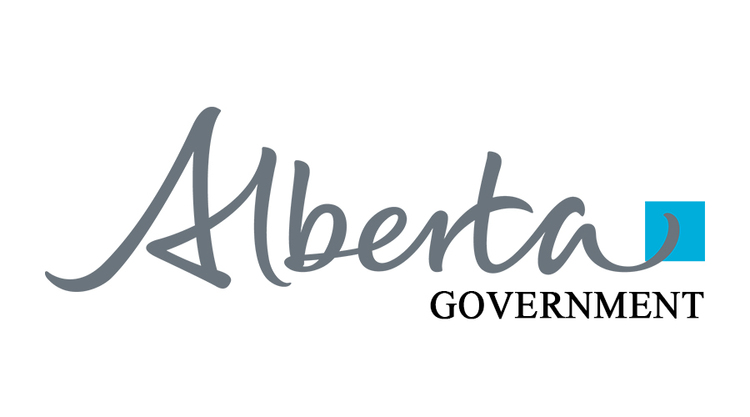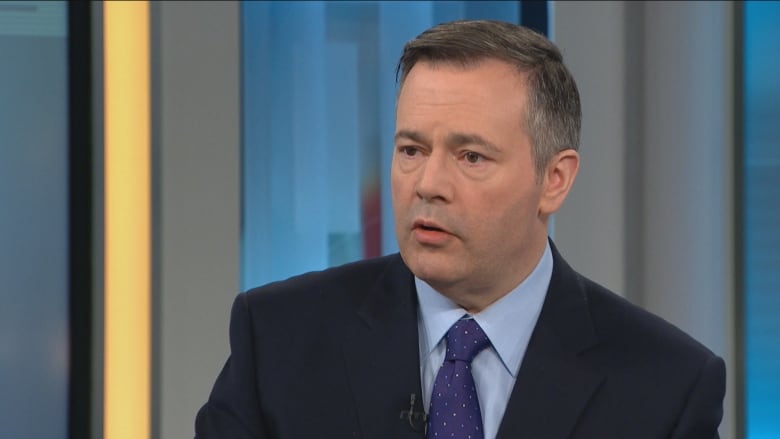Highlights (Revised 25 April 2019)
- UCP dominant in rural Alberta, Calgary
- Secondary parties lose seats
- Kenney’s vision relies on strong business backing
- Regulatory reform will have its challenges

Overview of Results
Elections Alberta results to 19 April at 17 :14:34 shows 7,326 of 7,326 polls reporting.
| Political Party | Votes-Seats | Percent |
| Alberta Party | 170,872 – 0 | 9.1% |
| Alberta Independence Party | 13,481- 0 | 0.7% |
| Liberal Party of Alberta | 18,457 -0 | 1.0% |
| New Democratic Party | 615,428 -24 | 32.7% |
| Freedom Conservative Party | 9,856 -0 | 0.5% |
| United Conservative Party | 1,030,560 – 63 | 54.8% |
| Alberta Advantage Party | 5,619- 0 | 0.3% |
| Green Party of Alberta | 7,687-0 | 0.4% |
Source: https://results.elections.ab.ca/wtResultsPGE.htm
Last Updated: April 19, 2019 – 17:14:34
The UCP received a very significant mandate in the 16 April election. With nearly 55 per cent of the vote, the UCP will hold 63 seats in the Assembly or just over 70 per cent of the seats. The NDP with 32.7 per cent share are the sole opposition party and hold 24 or 30 per cent of the seats. Both major parties benefited from vote splitting but the UCP gained the biggest from the first past the post system.
The Alberta Party took nine per cent of the vote but were shut out from the Legislative Assembly. This is a particularly humbling result for leader Stephen Mandel who came third in the riding of Edmonton McClung. Mandel lost to back-bencher and NDP incumbent Lorne Dachis. Another blow to the party was the loss of their former, and well-respected, leader Greg Clark in Calgary Elbow. In this hotly contested seat, Clark was pitted against UCP candidate Doug Schweitzer who lost the PC leadership contest to Jason Kenney. Schweitzer, a lawyer, will likely be a senior member in Kenney’s first cabinet.
The UCP carried all the rural Alberta seats and all smaller cities with the exception of Lethbridge West where the soon to be former Environment Minister, Shannon Phillips narrowly prevailed. Notable losses of NDP cabinet ministers in rural areas included Margaret McCuaig-Boyd (Energy) in Central Peace-Notley, Oneil Carlier (Agriculture and Forestry) in Lac Ste.Anne-Parkland, and Danielle Larivee (Children’s Services) from Lesser Slave Lake.
The complete collapse of the Liberal Party under David Khan leaves this middle of the road party in crisis. Khan ran in Calgary-Mountain View against Kathleen Ganley the former Justice Minister. The boundaries of the constituency had been withdrawn and part of the riding was previously held by retiring Liberal, Dr. David Swann. Swann, a former leader of the Alberta Liberal Party and highly respected, campaigned actively for Khan but Khan still finished third with 1,474 votes or less than six per cent of ballots cast. The UCP candidate, Jeremy Wong obtained 37 per cent of the votes.
The Liberals only ran about 60 candidates and this result may be the death knell of the Liberals in this province. No doubt the association of “Liberal” with Justin Trudeau’s federal Liberals did some damage. Another factor which may have registered with some voters was the gutsy platform plank to introduce a harmonized sales tax. This garnered some attention- negative and positive. The sales tax gambit, which is a rational approach to stabilizing government revenue was generally ignored by the media, the two main parties and, apparently the electorate.
Examining the Calgary ridings, all these races were two way races between the UCP and NDP except for Greg Clark’s efforts in Calgary Elbow. In the 26 Calgary ridings, the UCP’s vote ranged from 15,984 (Gotfried Richard- Calgary Fish-Creek) to 4,597 (Hallan Jasraj Singh) who lost to the NDP’s former minister Irfan Sabir in Calgary-McCall. The NDP’s count ranged from a high of 12,528 in Calgary-Mountain View (Ganley) to a low of 4,089 in Calgary South-east (Heather Eddy) losing to Matt Jones. Clearly, the NDP has succeeded the Alberta Liberal Party as the party of choice for the progressive vote in Calgary. (Mayor Nenshi was a speaker at the NDP convention in Calgary in June 2016.) The NDP’s vote is concentrated in centre city ridings. The NDP must appeal to suburban voters in both Calgary and Edmonton for any hope to regain power in 2023.
| Region | UCP | NDP | Alberta | Liberals |
| Calgary | 53.2% | 33.9% | 9.5% | 2.0% |
| Edmonton | 34.6% | 52.6% | 9.9% | 1.0% |
| Rest of Alberta | 64.6% | 23.6% | 8.5% | 0.4% |
| Lethbridge | 48.2% | 42.1% | 6.0% | 2.1% |
| Red Deer | 60.4% | 24.5% | 12.2% | 0.0% |
| Fort McMurray | 68.6% | 23.1% | 5.7% | 0.0% |
Looking north to Edmonton, of the 20 ridings in the capital, 19 were retained by the New Democrats. The highest vote getter for the NDP was Rachel Notley (14723) who just edged out the former Advanced Education minister, Marlin Schmidt (14519) in the neighbouring riding of Edmonton Goldbar. Notley comfortably won her riding with 72 per cent of the vote but her majority was down from 82 per cent in 2015. Schmidt doubled the vote count on David Dorward, an accountant who served as a minister in the short-lived cabinet of the late PC Premier Jim Prentice. The lowest vote tally for the NDP was in Edmonton-McClung,the hotly contested riding where the UCP candidate, Laurie Mozeson finished second with about 35 per cent of the vote.
UCP Kaycee Madu defeated NDP newcomer John Archer notching 9,589 votes giving him 45.5 per cent of the vote. Another riding the UCP hoped to gain was Edmonton-West Henday where 27-year old Jon Carson was defending his seat. UCP candidate Nicole Williams finished within a 300 votes of Carson.
What UCP’s victory means for Alberta

Jason Kenney has a mandate to reverse much of what the NDP accomplished since 2015. The UCP platform spells out in considerable detail the measures Kenney and his new caucus and cabinet what they will do in power. The detailed platform should assist the pubic service in responding more quickly on the agenda of change.
The principal thrust of Kenney’s platform was to get “Alberta back to work.” A centre-piece of the platform was to cut corporate taxes over four years from 12 per cent to eight per cent. Another central plank is to reduce regulations to make it easier for business to create jobs. One of the previous government’s measures deeply disliked by the business community, especially the small business community, was the increase in the minimum wage to $15 an hour.
“They increased the minimum wage by 50%, driving up labour costs for small business in the middle of a recession. This ideological decision led directly to layoffs.” UCP Alberta Strong and Free, p. 6.
The UCP platform will reduce the minimum wage for workers who are 17 years of age or younger to $13 per hour. Under this measure, called a “Youth Job Creation Wage,” this change will “encourage job creators to hire young Albertans for their first job.” In the Alberta Chambers of Commerce (ACC) pre-election pamphlet Vote Prosperity, the minimum wage was viewed as responsible for the loss of 25,000 jobs. It will be interesting to see how this change sorts itself out through the labour market in the coming months. With high school students emerging from classrooms in late June, the measure will help some businesses prune costs by choosing younger staff for unskilled positions. This may not help licensed restaurants or bars where most staff must be 18 years of age or older.
Another concern of the Alberta Chambers was additional changes in overtime, holidays and how employees would be scheduled. Look for amendments to the Labour Code and associated regulations this summer.
The small business community also has opposed thecarbon tax. The NDP government seems to have received no credit whatsoever from dropping the small business tax rate from three to two per cent notionally to help small business with the impact of the tax. The measure to repeal Alberta’s Climate Leadership plan will be vitiated by the federal carbon tax imposed where provinces have not put in place a comparable scheme. Thus, this largely symbolic gesture will not help small business but will stoke resentment against Ottawa’a intrusion.
“The mounting costs layered onto the backs of business by government
policy is the single greatest challenge to Alberta’s business competitiveness
and shared prosperity.” ACC- Vote Prosperity, p. 10.
Another key component of making Alberta open again for business is regulatory reform. According the the UCP platform, a Red Tape Reduction Act will require the new government to measure, report and reduce the province’s regulatory decisions made. A minister will be appointed to lead the action to achieve a one-third reduction target. For each new regulation introduced ministries must find one offsetting regulation for each new regulation.
Efforts have been made by past governments to stem the growth of regulations. These efforts were hampered by the magnitude of the task- There are literally thousands of laws and regulations on the books which simply accrete over time. Each regulation is overseen by a department or regulatory agency which devotes considerable energy and resources to maintaining the currency of their regulatory regime. Particularly complex regulatory regimes like energy, securities, environmental, electricity, and labour relations, are partnerships between regulators and private sector specialists. These specialists are well paid lawyers, economists, accountants, and moderately well-paid civil servants highly vested in preserving and monetizing their area of specialization.
For Kenney’s government to achieve a meaningful simplification of regulation, he will require a strong, intelligent minister adequately resourced to accomplish an ambitious multi-year, if not multi-decade, task. All jurisdictions face these problems of complexity where making any change to existing systems may, and usually, will lead to “unintended results.” In an area where there are particularly strong economic interests (e.g. medical professions, energy utilities), any mistake will be evidence that the “government doesn’t know what it is doing.” This response will be used by line departments and regulatory agencies against the new (and unwanted) central agency.
This is not to say that regulatory review is not without merit. Rather, the public’s expectation that government is responsible for all areas of public safety (health, food, investments, environment, children’s toys, etc.) makes it difficult for ministers and senior public servants to dispense with rules which might have prevented one accidental death. There is a tendency of organizations (and individuals) to hoard items just in case you need the item or regulatory power. “You never know” when you might need this power in your toolkit.
Another question will be whether cuts to regulation will be a new name for “de-regulation.” The term de-regulation is synonymous with the financial crisis and electricity de-regulation in Alberta, California and Ontario. The government will need to be able to communicate clearly how it has taken public health and safety into account before punting regulations.
Finally, regulatory agencies, such as the Alberta Energy Regulator, have often been empowered to make decisions at arms-length from government to act in a “non-political fashion.” While the government appoints the board of directors or commissioners, there is some risk that regulators may not understand the vision of the new government. Look for some quick wins and symbolic eliminations in the next few month